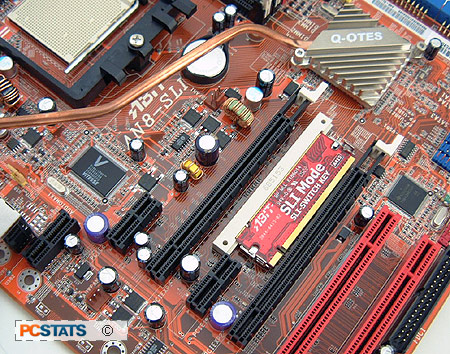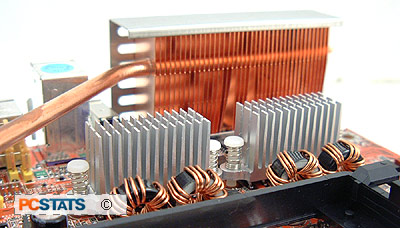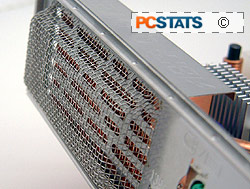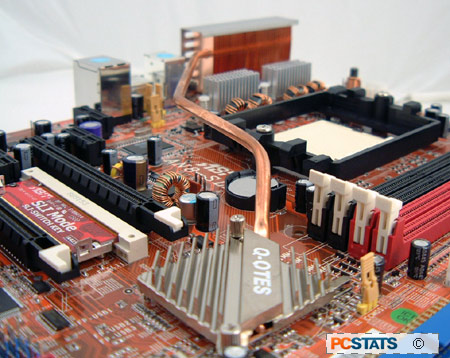The quality of the information in motherboard manuals has
gotten better over the years. In the past, manuals were full of cryptic
terms that only experienced users understood, now they can guide newbie users without much
trouble. For the ABIT AN8-SLI, the company has included good documentation.

We'd all like to hope that motherboard manufacturers
have learnt from lessons of the past... and hopefully the burst
and leaking capacitor period  has finally been put to rest. From what we can tell, there has been a concerted effort by most
motherboard makers to use only brand name or Japanese-made capacitors on enthusiast grade
boards, if not all models. Looking at the electrolytic capacitors used on the ABIT
AN8-SLI motherboard we find the brands Rubycon, Sanyo and KZG used.
has finally been put to rest. From what we can tell, there has been a concerted effort by most
motherboard makers to use only brand name or Japanese-made capacitors on enthusiast grade
boards, if not all models. Looking at the electrolytic capacitors used on the ABIT
AN8-SLI motherboard we find the brands Rubycon, Sanyo and KZG used.
About the only thing I have to complain about
the AN8-SLI is the location of its auxiliary molex
power connector. The power connector is located under the last PCI slot, where it
is difficult for anyone to access once the board is installed it a case. Users may likely
have to dedicate one line from the power supply just to reach that area! As you
can guess, this was a definitely a noodle scratcher, especially since the
connector is so far from the PCI Express slots.
 The Heatpipe on the Northbridge
The Heatpipe on the Northbridge
Heatpipes are all the rage now, they are used
with CPU heatsinks, videocard coolers and now
even with motherboard chipsets. I am sure the first thing you noticed when looking at
the AN8-SLI is its large 'Q-OTES' heatpipe-based cooling solution.
The nVidia NF4 SLI chipset comes in contact with a copper heatspreader which then
moves the heat via the heatpipe several inches to the copper radiator at the rear I/O
area.
 ABIT's Q-OTES system, as it is called, takes advantage of system airflow and exhaust air from the CPU heatsink to
cool those copper fins which in turn keep the NF4 SLI chipset running at the right temperature
threshold.
ABIT's Q-OTES system, as it is called, takes advantage of system airflow and exhaust air from the CPU heatsink to
cool those copper fins which in turn keep the NF4 SLI chipset running at the right temperature
threshold.
During testing the chipset stayed at a balmy 35C while
under load, so the Q-OTES cooling was obviously working. Looking at
the system, it is certainly an innovative solution to the standard motherboard chipset heatsink, but I would have preferred if
the heatpipe would have hugged the motherboard PCB a little closer (ie, as on the
Asus A8N-SLI Premium
).
As it is now, it's worthwhile to take a bit of precaution to make sure you do not damage the
heatpipe when installing devices onto the AN8-SLI. Secondly, on the I/O shield there
is a wire mesh cage around the hot air exhaust area, along with a rather un-aerodynamic
punched sheet metal vent.

The punched sheet metal vent and wire mesh filters together are a bit counterproductive, and will
be prone to collecting dust. EMI filtering may be the reason for the
sheet metal vents, but we would have preferred it if the wire mesh was all that
was used here.
